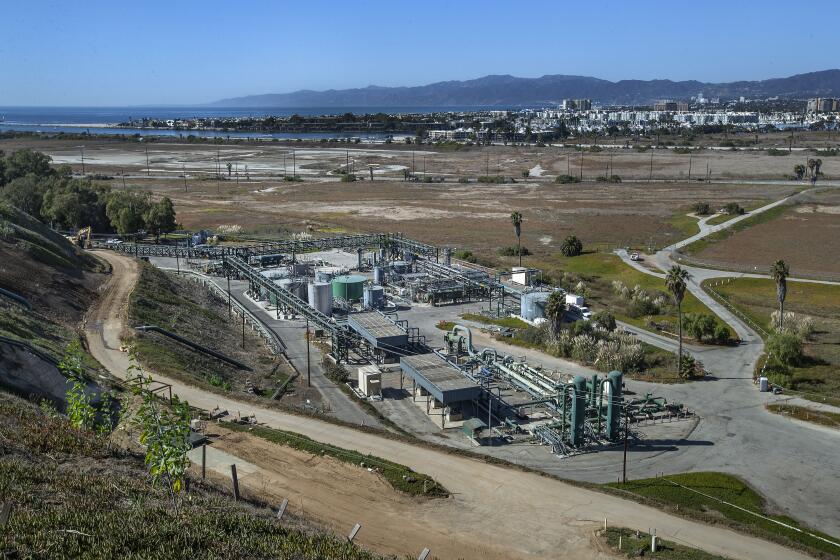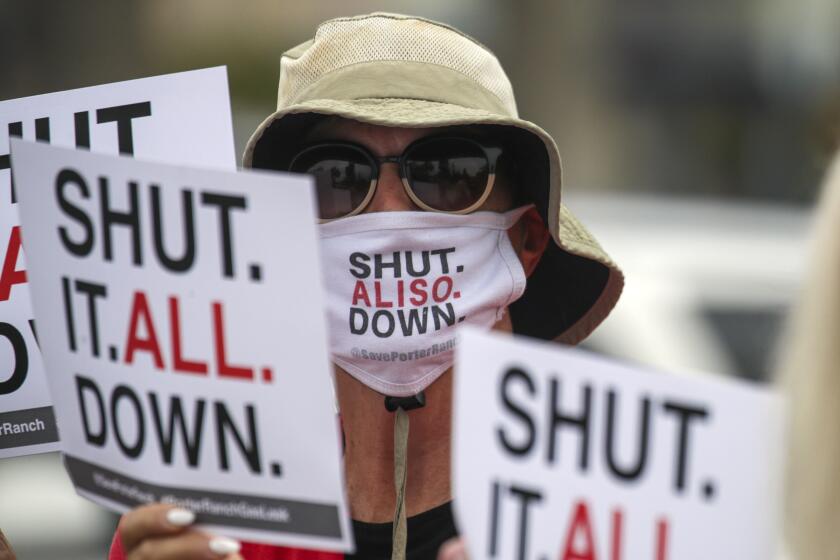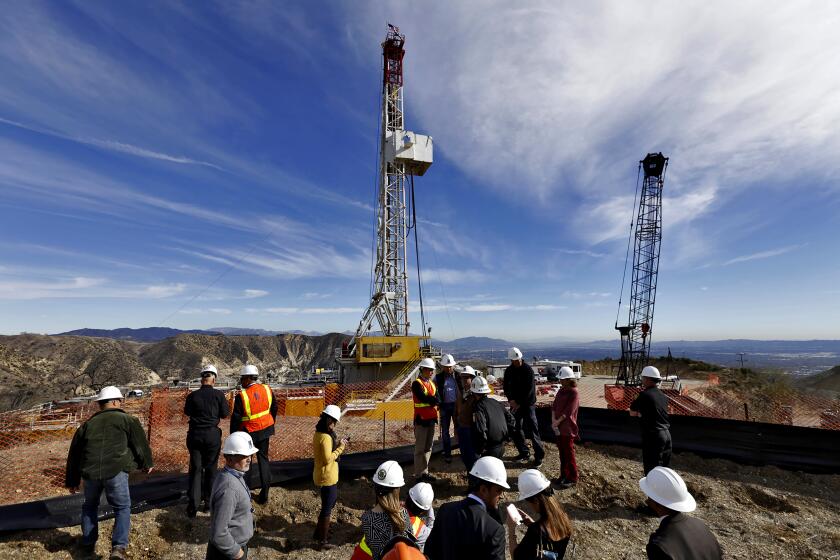SoCalGas agrees to pay up to $1.8 billion in settlement for 2015 Aliso Canyon gas leak
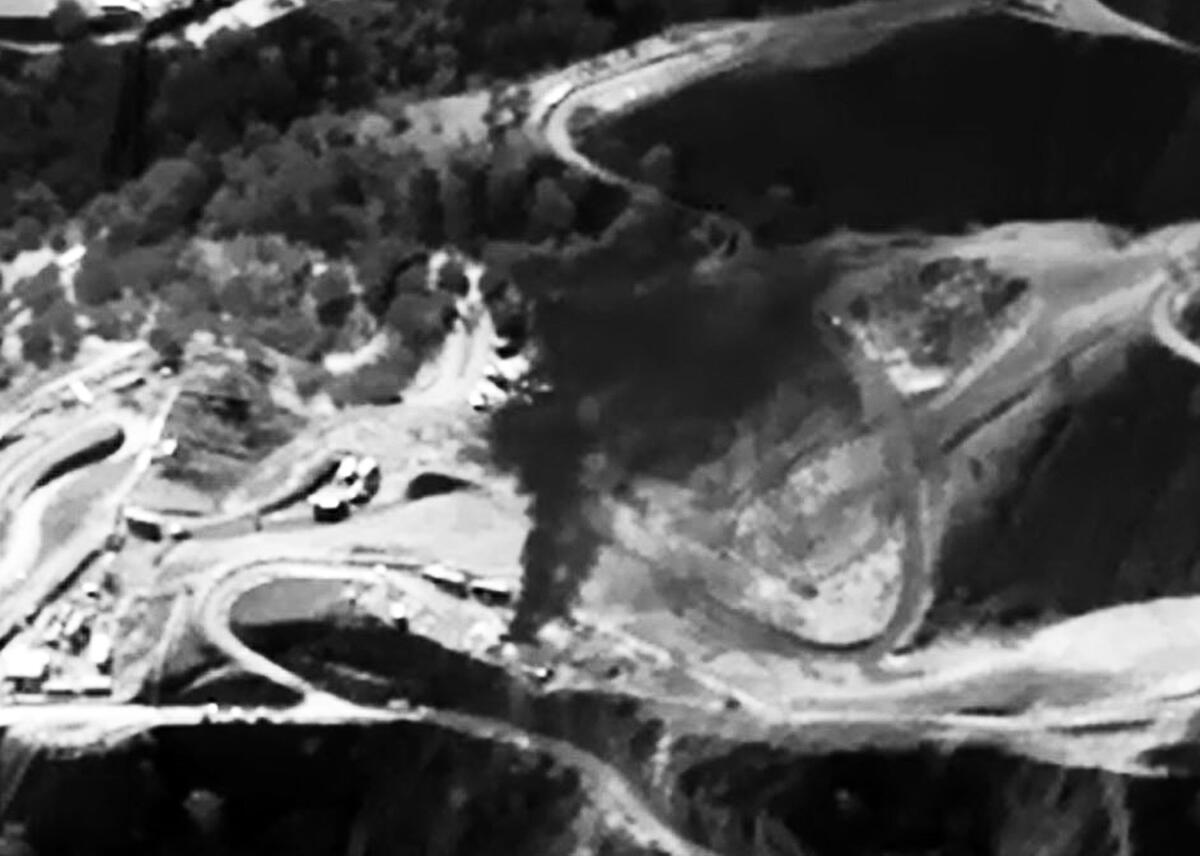
It’s been nearly six years since noxious fumes spewed from a failing natural gas storage well in the hills above the San Fernando Valley, spilling into the homes of Porter Ranch and sickening thousands with headaches, nosebleeds and nausea.
After years of lawsuits, mounting anger from homeowners and lingering uncertainty over the site’s safety, Southern California Gas Co., which operates the storage facility, and its parent company announced agreements Monday to pay up to $1.8 billion to settle years of legal action.
In a statement, SoCalGas said the agreements were expected to resolve “substantially all material civil litigation” against the company, which would record an after-tax charge of about $1.1 billion this month.
Settlement costs wouldn’t be passed on to customers, the utility said.
As part of the settlement, the utility and its parent, Sempra Energy, deny any wrongdoing.
The Sempra Energy subsidiary is a powerful opponent of efforts to eliminate natural gas.
While the settlement ends years of legal battles, some current and former residents of the Porter Ranch area say it does little to ease their long-term fears over exposure to toxic chemicals and whether their community will be safe.
For 112 days, about 100,000 tons of methane, ethane and other chemicals poured into the air, forcing more than 8,000 families to flee their homes.
By the time SoCalGas was able to plug the blowout, it had become the largest methane leak in U.S. history.
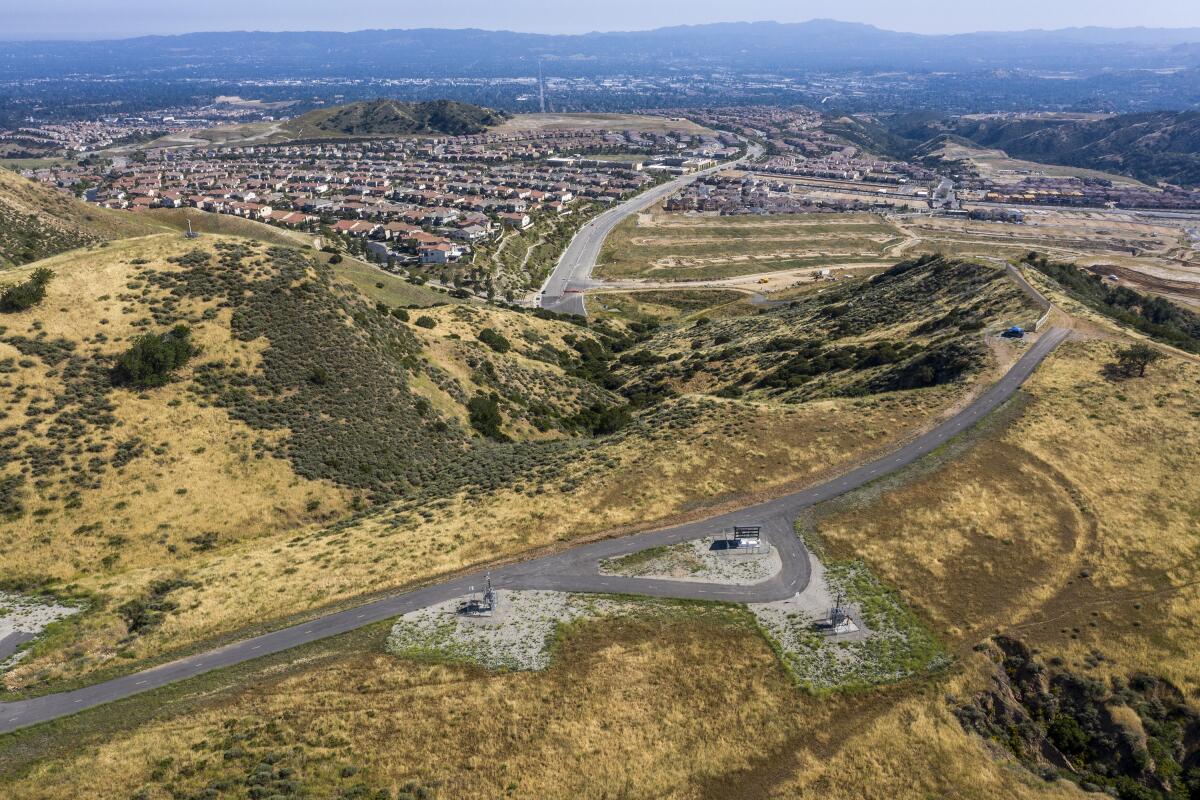
At a media briefing Monday on the steps of the downtown Los Angeles federal courthouse, attorneys representing the plaintiffs said the settlement reflected just compensation for their injuries.
“There was no plan when the well blew up on what to do,” said attorney Brian Panish. “Because of those failures, these people suffered. We’re thankful we can do our best to offer fair and just compensation.”
SoCalGas’ Playa del Rey storage field may pose a far greater threat than Aliso Canyon, site of a record-setting gas leak.
Panish said that affected residents gave depositions by Zoom during the pandemic and that some still living in the area believe that the storage field, which is active, should be shut down.
But he said that the settlement shows that the gas company has taken some responsibility.
“It sends a loud message about what had happened — people were justified in their complaints,” he said.
Raymond Boucher, another attorney representing the plaintiffs, said two independent arbitrators will analyze the cases of more than 35,000 clients to determine the effect the blowout had on them and reasonably distribute the settlement money.
Nearly six years after the worst methane gas leak in U.S. history forced more than 8,000 families in Porter Ranch to flee their homes, Southern California Gas Co. has agreed to pay a settlement of up to $1.8 billion.
“It’s very difficult to talk about what an average would be,” he said. “They will receive just compensation.”
Christine Katz, one of the plaintiffs, said she was very pleased with the settlement.
“It seems like a dream to me, I’m ecstatic,” Katz said. “It’s a chapter in my life that I am finally able to start to close and move on.”
Now living in Simi Valley, she said her family sold their Porter Ranch home because of the disaster.
The gases wreaked havoc on her household. Katz said her daughter suffered nosebleeds and rashes and had trouble breathing. Their dogs got sick, she said. All the fish in their koi pond died.
The family relocated to temporary housing in Newbury Park and packed up their home, throwing away couches, beds and other furniture, Katz said.
The fossil fuel industry claims ‘renewable natural gas’ is green. It isn’t.
“When we touched [anything], we would break out in rashes,” she said. “It was devastating during that period — having two small children and being ill and them being ill.”
How much money is paid out and to whom depends on a variety of factors.
The first settlement agreement requires getting about 97% participation out of the roughly 36,000 plaintiffs, and court approval of how settlement money will be distributed, among other conditions, according to a statement by SoCalGas.
Second and third agreements involve separate settlements and dismissing named plaintiffs in a business class action, both of which are subject to court approval, the utility said.
“These agreements are an important milestone that will help the community and our company work toward putting this difficult chapter behind us,” said Scott Drury, chief executive of SoCalGas.
“In the years since the leak, SoCalGas has worked alongside regulators, technical experts and our neighbors to enhance safety at all our underground storage facilities and our engagement with the community,” Drury added. “As a result, our storage facilities operate by what regulators and experts have called some of the most rigorous safety standards in the country.”
For at least one plaintiff, however, the settlement does little to address the lingering health and economic damages caused by the historic leak.
Once the money is divided among thousands of plaintiffs, “if you do the math, we’re left with a small amount,” said Matt Pakucko, president of the group Save Porter Ranch.
“For what they put us through, to claim no wrongdoing and try and buy us out, it’s a joke,” said Pakucko, who runs a music production business out of his house near the Aliso Canyon facility.
News of the settlement brought back painful memories of the months-long disaster, including a time when weeks into the leak, odors got so bad that an air quality inspector was dispatched to his home.
“It was like standing behind a 747 with the engines going,” Pakucko said. “It burned our throats, burned our skin. We couldn’t breathe and we passed out on the couch in pain.”
He said members of his family have suffered heart palpitations, cancer and other ongoing health problems they believe are related to emissions from the facility.
And they keep smelling and reporting leaks.
The facility was allowed to resume storing methane in 2017 — a move that’s drawn the ire and suspicion of many.
“How do you put a price on human suffering and the health devastation, and the loss of business and the loss of property value?” Pakucko said. “The ongoing health issues that so many people still have?”
The 2015 blowout was one of the nation’s worst environmental disasters, on par with the 2010 Deepwater Horizon oil spill in the Gulf of Mexico, and has forced California to rethink its reliance on fossil fuels and the risks they pose.
Although the utility was cleared to resume storing natural gas at the Aliso Canyon facility in July 2017, it has been doing so at reduced pressure, “providing an additional margin of safety,” according to SoCalGas.
Other safety measures are in place, such as using casings around the inner steel tubing to provide a secondary, physical barrier; checks on all wells with advanced inspection tools and pressure testing; pressure monitoring of all wells by a 24-hour operations center; and methane leak detection systems at the wellhead and fence line, the utility said.
SoCalGas previously settled cases brought by local and state government agencies. Those include $4 million to resolve criminal charges brought by the Los Angeles County district attorney’s office, which accused the gas company of failing to properly notify authorities when the leak began, and $8.5 million in 2017 to settle violations cited by air quality regulators.
In a $119.5-million settlement in 2019 between SoCalGas and city, county and state officials and prosecutors, the utility agreed to pay civil penalties and fund projects to cut greenhouse gas emissions and address other environmental problems as a way to offset the damage caused by the leak.
The company was also required to pay $25 million for a study of the blowout’s short- and long-term health effects on people in surrounding communities.
A years-long investigation concluded in 2019 that the leak was caused by a corroded pipe casing and failures by SoCalGas to adhere to best safety practices.
The report by Blade Energy Partners found that the company did not investigate the causes of previous ruptures at the facility, didn’t assess its wells for disaster potential before the Oct. 23, 2015, blowout and should have been able to plug it sooner. The leak wasn’t stopped until Feb. 11, 2016.
Through the California Public Utilities Commission, Gov. Gavin Newsom has sought to accelerate the permanent shutdown of the Aliso Canyon facility.
Gabriel Khanlian, president of the Porter Ranch Neighborhood Council, said that the settlement puts the community “one step closer to closure” for past injuries, but that the future is still at stake.
Khanlian was adamant: “We still need this facility to be shut down.”
For the neighborhood council president and others, there are too many unknowns for the settlement to bring real relief.
They’ve smelled gas off and on for the last six years, Khanlian said.
A health study on the leak’s impact is not completed.
“We still don’t know what we were exposed to and we still don’t know what we breathed in for five months,” Khanlian said.
And while many have voiced support for permanently closing the facility, he said community members are at a loss for when they can expect that to happen.
“Everybody seems like they are pro-closure, but for some reason nobody’s pulling the plug,” Khanlian said. “I think it falls on the governor at this point. He needs to step up and, once and for all, give a deadline of closure for the facility.”
L.A. County Supervisor Kathryn Barger, whose 5th District includes Porter Ranch residents who were displaced, said she was grateful to hear the utility company was working to make amends with residents for the leak’s “significant impacts.”
“I look forward to learning more about the settlement agreement and am hopeful that it will help provide additional resources and support for the community,” she said.
Alexandra Nagy, California director for the environmental group Food & Water Watch, said the settlement faces “a lot of healthy skepticism” in the community over whether the amount will cover the costs, including medical bills, lost business and decreased home values.
In the Porter Ranch neighborhood closest to the gas storage facility, residents have continued to suffer nosebleeds, headaches and other health problems, Nagy said.
“People just don’t trust SoCalGas and feel like this relationship will never be repaired, no matter the [settlement] number, and ultimately want to see this place shut down immediately,” she said. “People are very alarmed still about what’s going on at that facility daily, and those harms and fears will continue as long as the facility remains open.”
Times staff writer Jaclyn Cosgrove contributed to this report.
More to Read
Sign up for Essential California
The most important California stories and recommendations in your inbox every morning.
You may occasionally receive promotional content from the Los Angeles Times.

